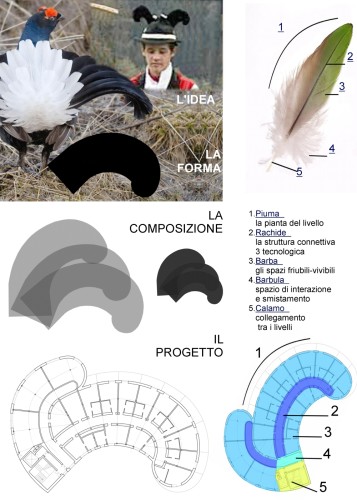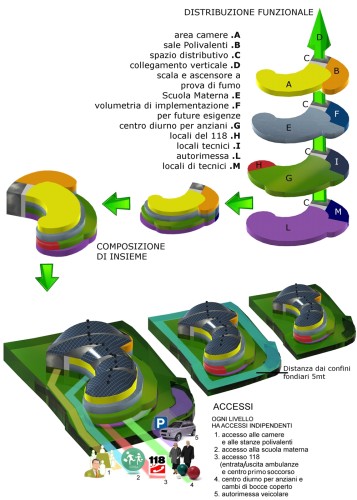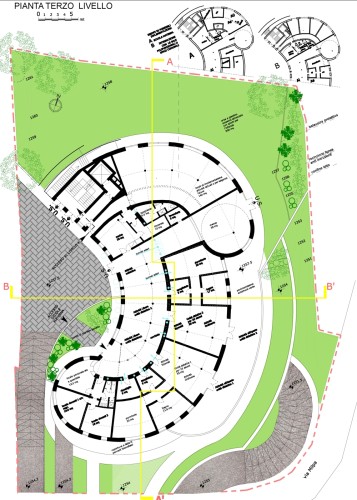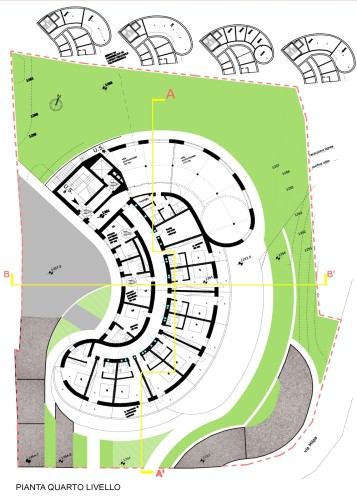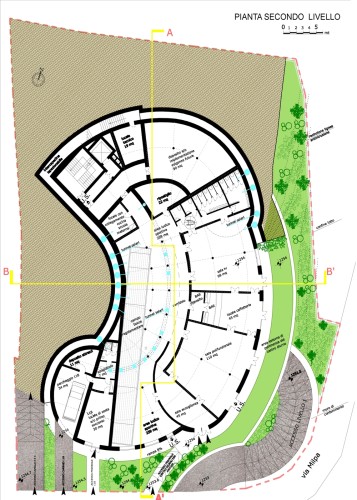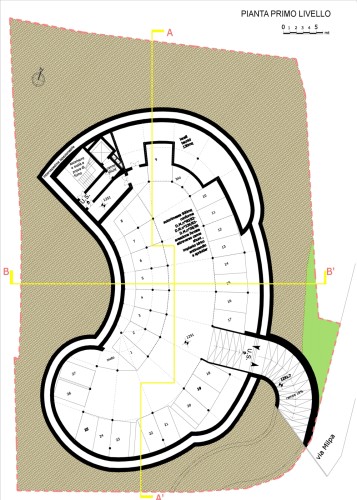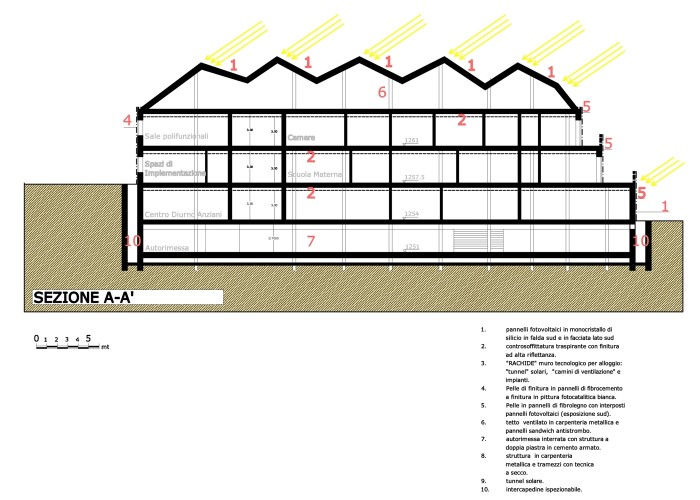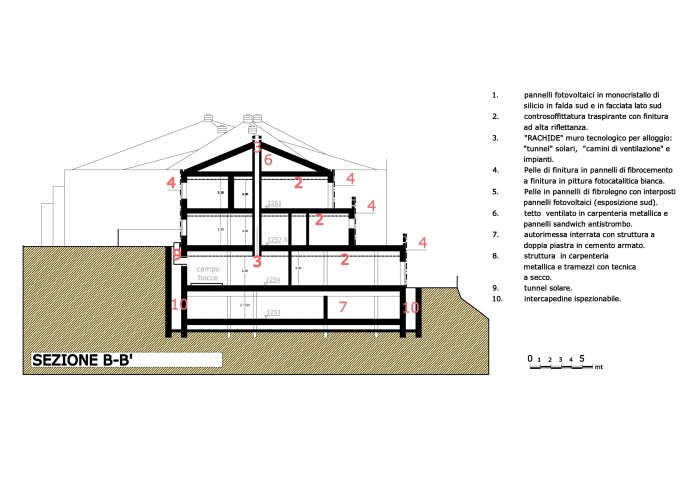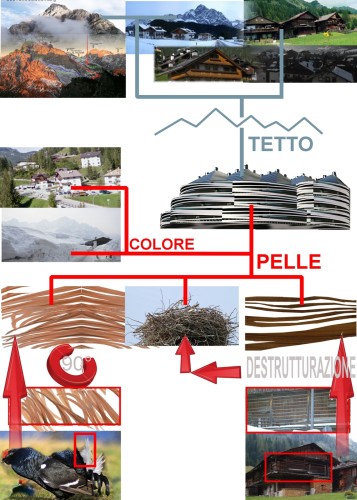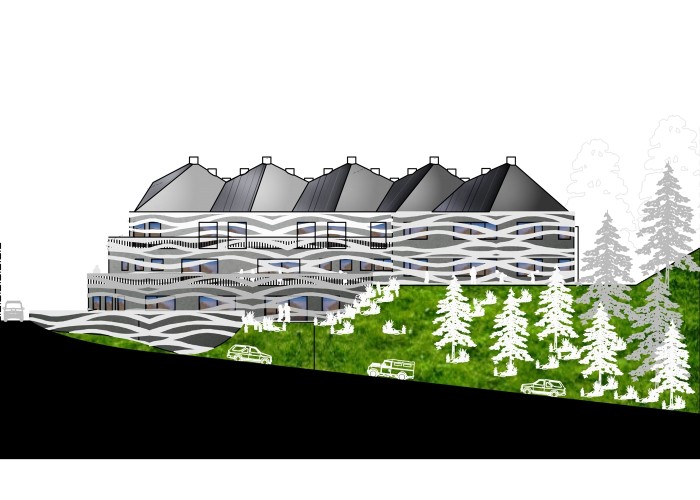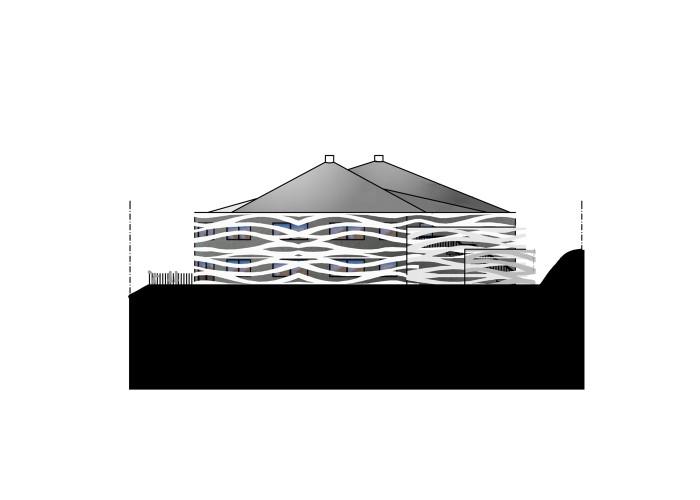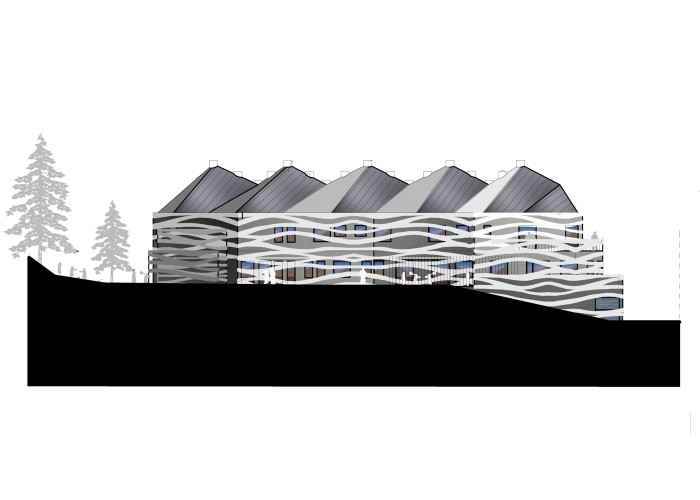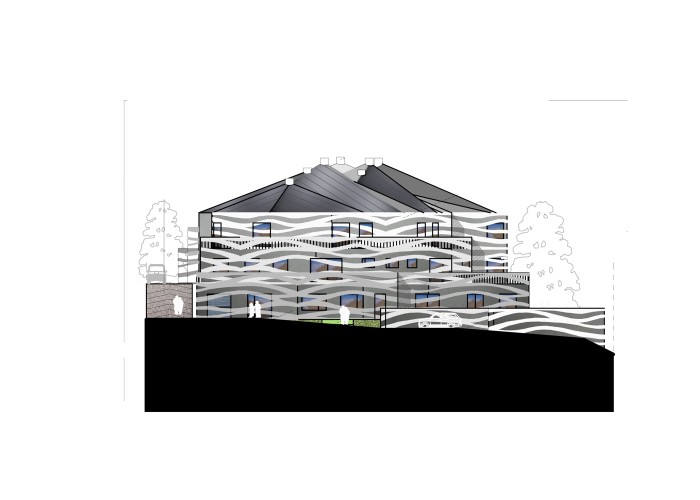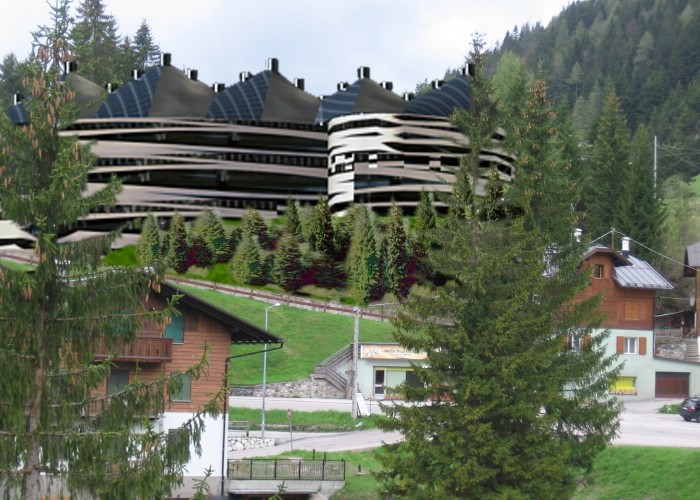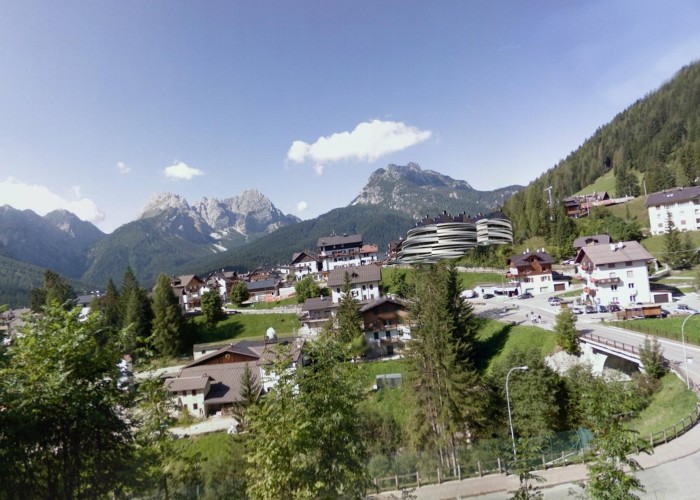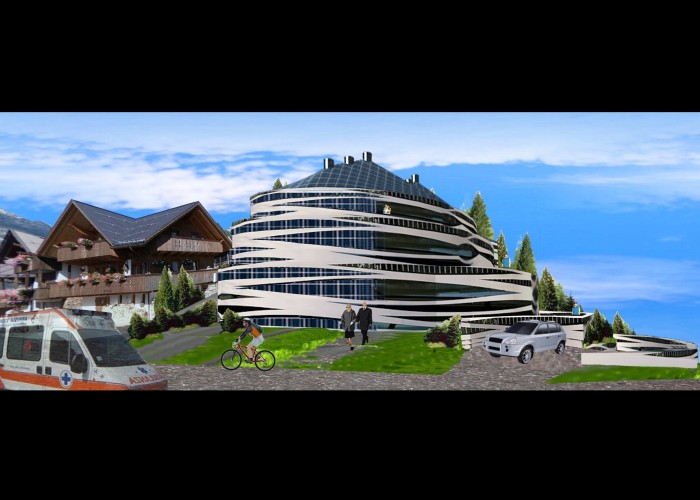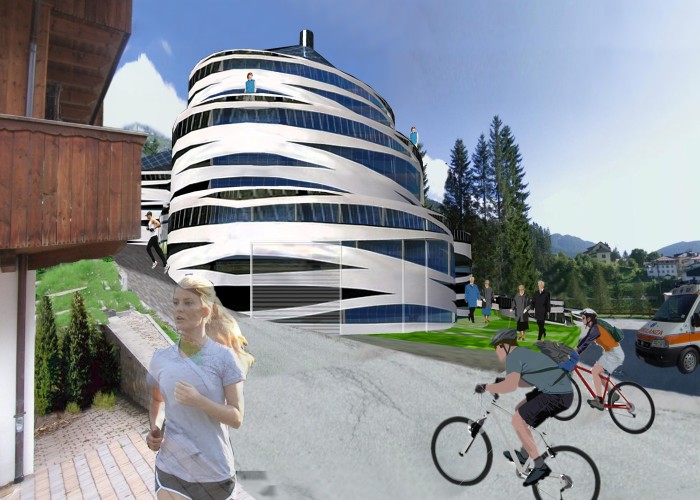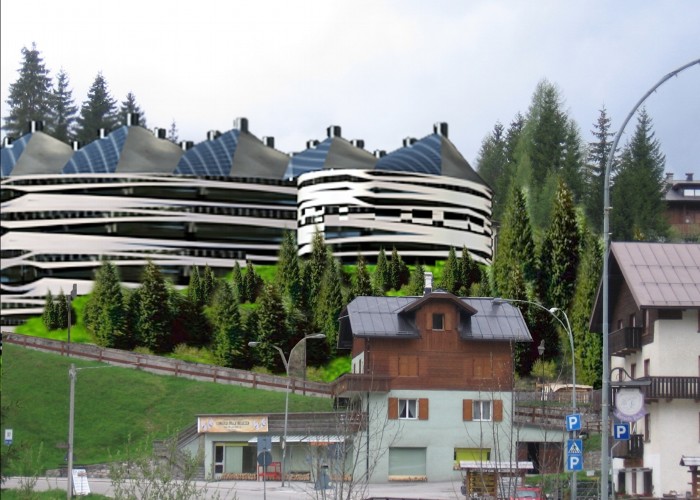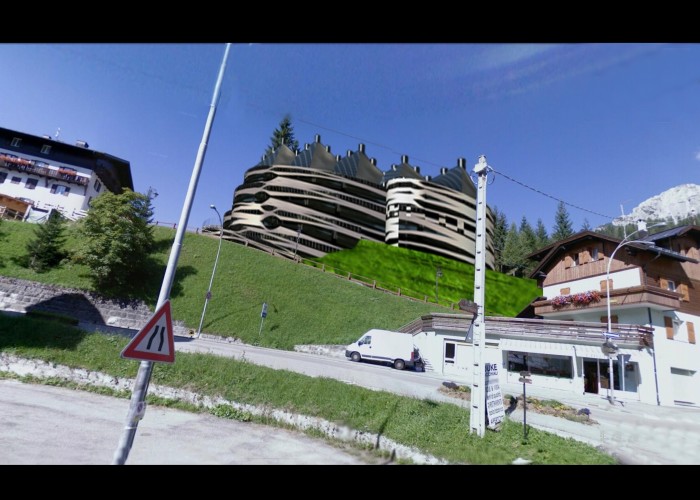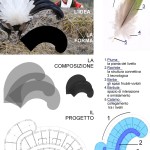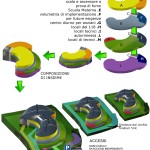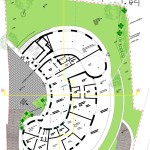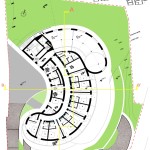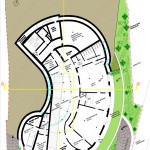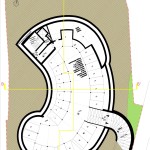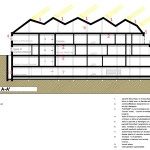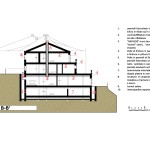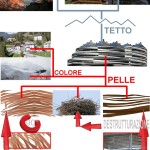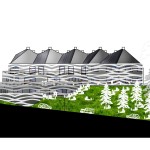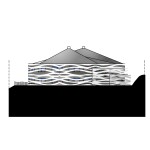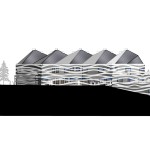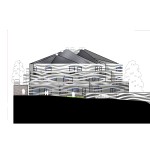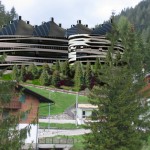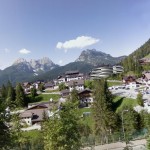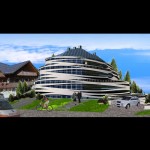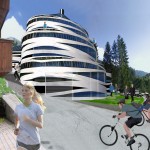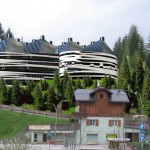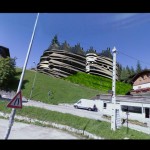Type of work
preliminary project, Project
Building type
multipurpose public center
Use
services, tertiary
City
Sappada (BL)
Country
Italy
Year
2012
Client
Town of Sappada
Plot area
2814 m²
Floor area
3782 m²
Floor plan
900 m²
Covered area
900 m²
Number of floor
2
Cubic volume
13237 m³
In relation to the requirements of the public clients and after a careful analysis of the socio-cultural characteristics that typify the valley of Sappada, the Schbaaf decoration was considered to be of great symbolic value: identification and metonymy of Sappada, but also representative of the enlarged mountain community. So the plan of the building recalls the form and structure of Schbaaf ( hat decoration made from tail feathers of grouse, typical of the dolomite valleys) . The structure follows the relief and natural lighting, it buries its technical parts and moves back at each floor, in order to reduce the visual impact of the volume and realize an independent access, plus an outdoors relevance area at each floor (every floor is used for only one function). The steel structural work acts as a rigid body, according to the “hierarchy of strength” in response to the current seismic regulations in the area. Attentions in designing (osmosis and natural convection energy recovery ventilation stacks, integrated wind energy nano-plants, solar tunnels and photovoltaic generation plants, selective glazing, phase change materials, rainwater and plants water recovery…) plus the dry technique made it possible to achieve a sustainable building. The flexible architecture principles have been applied to ensure building adaptation to future needs while maintaining its connotation (multipurpose building used by the community) avoiding the functional obsolescence as time passes.


